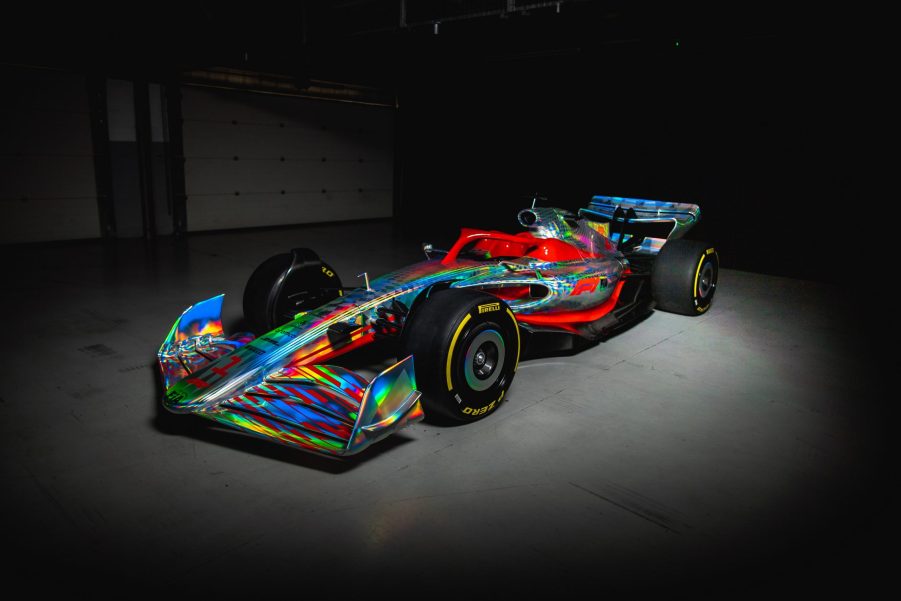
The 2022 Formula 1 Car’s Wing Helps Drivers Overtake Better
Presently, one of the biggest complaints surrounding Formula 1 right now is the lack of close racing. Generally, whoever is out in front pulls out a mammoth gap and disappears into the flag-checkered horizon. Go back and watch a few of the most recent Lewis Hamilton victories to see what I’m on about (Lewis’ immense skill notwithstanding). Now the FIA wants to change that for 2022, and the new F1 car’s rear wing promises to help.
Reducing dirty air in Formula 1 is key

Frankly, there’s a single culprit for the lack of overtaking in Formula 1 over the last several years. Dirty air. No, I’m not talking about physically dirty air, full of witches and little dogs. I’m talking about vortices, baby. Get that nerd had on because things are going to get a little technical. Basically, a Formula 1 car leaves air disturbed as it passes through it. Like a hand through smoke.
These vortices created by the Formula 1 car (or your hand) create turbulent air. And turbulent air is the enemy of downforce. According to the FIA and CarThrottle, a Formula 1 car experiences a massive 50+% drop in downforce when following closely due to dirty air. Just look at how much water is flung back into the air by Kimi’s car in the image above.
The new regulations promise more overtaking

So, bearing these issues in mind, the FIA set out to help drivers follow closer without the reduction in downforce. This should help with the overtaking, no? Yes. First, Formula 1’s governing body set about reducing the vortices that cause dirty air. The FIA found the best way to do that was to smooth out the endplates, or sides, of the wing, as seen above. Those smoother endplates help reduce air coming off the sides of the car and into other cars on the overtaking line.
Now take a look at the image below. Now the small diffuser coming off the back by the exhaust, as well as the overall curvy shape of the wing. That diffuser serves to scoop up what dirty air there is behind the car and shoot it skyward. Sort of like the rain coming off the back of Kimi’s car. That way the following car isn’t sucking in all that dirty air.
Can the new changes deliver?

It’s the hope of the FIA, teams, and drivers that these changes work. The drivers want a proper go at their rivals, and we fans want to see it. Ideally, this is exactly what we get, as the cars will also be narrower. Hopefully, these changes can make the sport as a whole fantastic to watch. And hopefully, we get to see some tight racing on street circuits like Miami and Monaco.


